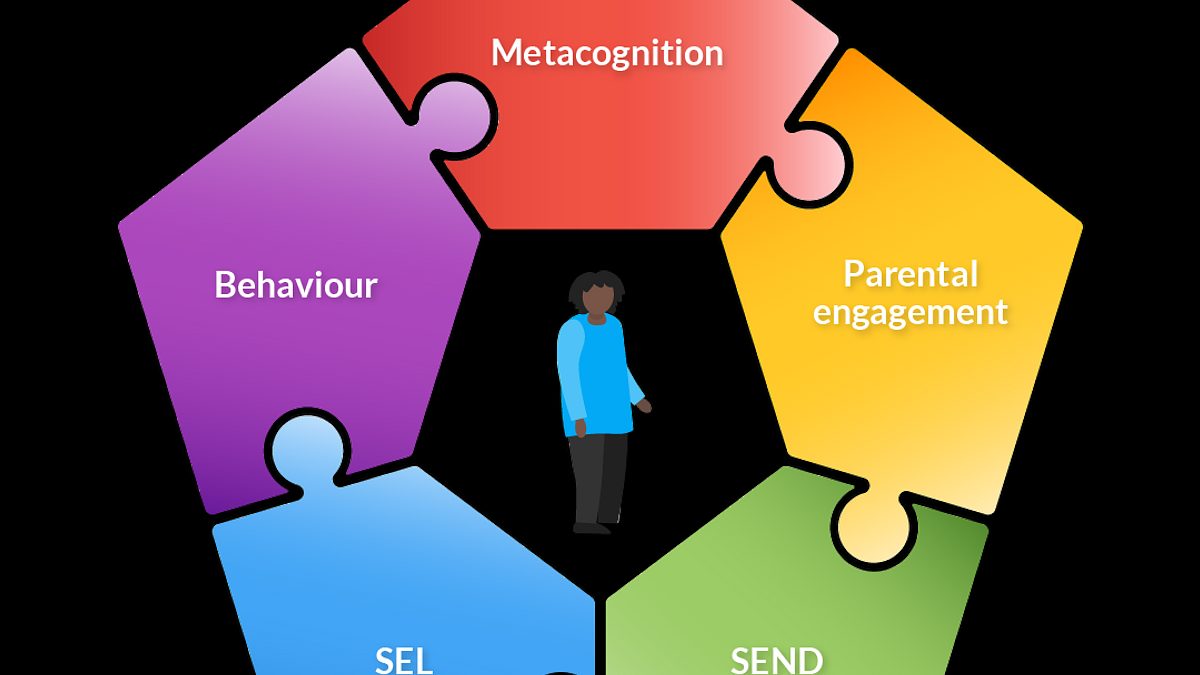
Blog -
Getting the foundations right
The journey towards a goal of every child being a writer

Share on:

by Alexandra Park Research School
on the
Hayley Wood, Assistant Director of Alexandra Park Research School describes how her school have been implementing a whole school approach to developing learning behaviours in the first of a series of blogs.
As a teacher, how many times have you stood in front of a class questioning whether this is actually the first time they have heard the concept you are explaining? Or whether, actually, you taught the same thing yesterday? I am guessing more than once. As a teacher, it took me a long time to deepen my understanding of the difference between teaching something, and the children learning it. This blog describes the journey we are on as a school as we implement a whole school approach to developing the children’s learning behaviours, with the hope of creating confident, motivated self-regulated learners, equipped with the skills and behaviours they would need to achieve throughout their school life and beyond.
Engagement could be described as the ultimate aim for teachers and is discussed in such terms because it has been linked positively with desired academic, social, and emotional positive learning outcomes both inside and outside school on numerous occasions. When we use the word‘behaviour’ we can quickly assume that it relates solely to strategies to manage misbehaviour in the classroom. Crucial as these are, there is another element: how teachers can also explicitly support children’s learning behaviours. Recommendation 2 of the Improving Behaviour in Schools guidance report states that as we explicitly teach these, developing and strengthening learning behaviours in our pupils, they become more motivated and determined to succeed (EEF, 2020).

Although much of the research available focuses on evaluating specific interventions or outcomes, Ellis and Tod’s review of the literature provides a conceptual framework for teachers to use to when teaching behaviour for learning. Ellis and Todd’s (2014) behaviour for learning approach is based on the premise that there are particular behaviours necessary for learning. They indicate that it is important for teachers to think consciously about how they create opportunities to develop these learning behaviours. Our school approach was built on the theory that we can develop stronger learning behaviour by explicitly focusing on it. This involved the teacher looking for opportunities where they can comment on the learning behaviours that children have either already demonstrated or that they will need to complete a particular task. We know that, as well as explicit instruction, teacher modelling of metacognitive and cognitive strategies has been found to have positive effects (EEF’s Metacognition and Self-regulated Learning guidance report). In day-to-day practice, our priority was to promote learning behaviour, looking for opportunities through the curriculum, the behaviour they model and their routine interactions with children to develop learning behaviours. A further consideration was the teacher explicitly modelling what learning behaviours look like in practice.

The initial thinking was that by increasing teachers’ knowledge of learning behaviours through professional development, and adapting classroom practice, this would lead to a change in learning behaviours demonstrated in the classroom. As the implementation of the project progressed, it became evident that making our work on learning behaviours explicit to the children was a gap. This gap was significant enough to impact on the success of the project, as many children were unable to articulate their learning and had very little understanding of what learning behaviour is and, more importantly, how it impacts them. After further research, continuing with the current programme of CPD without addressing the gap in children’s knowledge of learning behaviours was judged to be ineffective. Therefore, the direction of the project shifted to include an added focus of children’s ownership and understanding of their own learning behaviour.
The next phase was built around a children’s version of the school’s learning behaviour model to support understanding and to give staff, children, and the whole school community a shared language. This included a focus on developing the children’s ability to discuss their learning and helping them to develop a language to talk about their own learning.
Following further internal and external research, the children’s version of our learning behaviour model was designed based on a shared understanding and coherent picture of what it takes to be a good learner. It utilises previous ideas and aims to develop children’s understanding of learning and, importantly, shifts responsibility for learning to learn from the teacher to the learner. The six behaviours identified were: pride, determination, creativity, curiosity, independence, and collaboration.

The next blog in this series describes how we launched this to the children and how we implemented the model across school, creating a shared language for children, staff and parents.
References
Ellis, S. and Tod, J., 2014. Promoting behaviour for learning in the classroom: Effective strategies, personal style and professionalism. Routledge.

Blog -
The journey towards a goal of every child being a writer

Blog -
Considering recommendation 1 of the newly published EEF guidance report.

Podcasts -
Episode of EEF podcast‘Evidence into Action’(uploaded in June 2023), focusing on SEN in mainstream & adaptive teaching.
This website collects a number of cookies from its users for improving your overall experience of the site.Read more